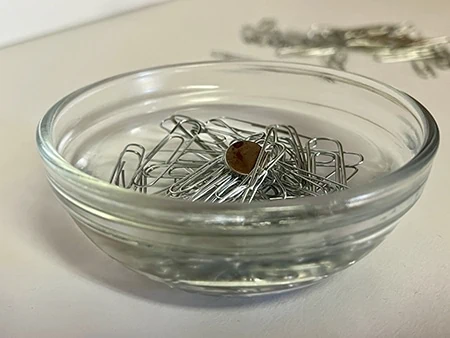Cold weather is great for sipping cocoa by the fire, watching college football, and making snow angels. But how do cold temps affect magnets? Luckily, most magnets actually become stronger and more resistant to demagnetization in cold weather.
- Strength: In most cases, cold temperatures increase the strength of a magnet’s magnetic field. This is because the atoms in the magnet move slower and vibrate less, allowing them to align more consistently and generate a stronger field.
- Demagnetization: Cold can also affect how easily a magnet can be demagnetized. Generally, colder temperatures make most magnets more resistant to demagnetization. Ceramic (Ferrite) magnets are the exception here – they become easier to demagnetize when cold.
Variations depending on material:
- Neodymium magnets: These powerful magnets will perform well at temperatures as low as -130°C. In fact, their magnetism strengthens in the cold until this point Once you move into extremely frigid conditions (below -135°C), the field will begin to diminish. At the boiling point of liquid nitrogen (‑196°C), a neodymium magnet’s field strength will decrease by 85-90%. At this temperature, the molecules in the magnet fall out of alignment. However, when the temperature rises, the magnet will return to normal performance. The change in magnetic output is reversible; that is, no permanent loss of magnetic strength occurs.
- Ferrite (Ceramic) magnets: These common magnets are generally less powerful and more susceptible to demagnetization. While cold temps initially strengthen their magnetism, they can lose their strength at temps below -60°C.
- Flexible magnets: Flexible magnet strips and sheets can become stiffer or more brittle at extreme temperatures. Check the manufacturer’s specifications for your specific magnets.
- Alnico and Samarium Cobalt magnets: These durable magnets have high thermal stability and are less affected by temperature changes than other types of magnets. These magnets will continue to get stronger as the temperature decreases, all the way to near Absolute Zero (-459°F or -273°C).
- Electromagnets: Colder temperatures decrease the resistance of the wire in electromagnets, allowing more current to flow and strengthening their magnetic fields.
Important note: While cold generally strengthens most magnets, extreme temperature changes can be detrimental. Moving rapidly from very cold to very hot temps can cause magnets to crack or break.
Try This Experiment to See the Impact of Cold on Magnets!

- Starting at room temperature, drop a neodymium magnet into a bowl of paper clips and count how many become attached.
- Next, fill the bowl with water (leave the paperclips in the bowl) and put it in the freezer until the temperature of the water falls near freezing, but isn’t frozen (32°F).
- Now drop the magnet into the water and put the bowl back in the freezer for 15 minutes, removing the bowl from the freezer just before the water freezes.
- Remove the magnet from the bowl and count the number of attached paper clips. Compare this number to the number of clips that attached to the magnet at room temperature.
Now you know what happens when your magnet or magnet application is exposed to cold temperatures. If you have questions about your specific magnet scenario, please feel free to reach out to our experts – we love to talk magnets!
We hope this clarifies how cold affects magnets! If you have any further questions, contact us.
Tags: cold magnet experiment, how are magnets affected by cold temperatures, magnets and cold, temperature effects on magnets



